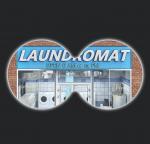CHICAGO — Laundromats generally share many similarities, so how and where such a service business differentiates itself from its competitors carries great importance.
Part 1 of this article addressed some sure signs when a laundry business isn’t setting itself apart in the marketplace. Let’s continue:
WHERE TO FOCUS EFFORTS TO DIFFER
Bill Corbett Jr., chief strategy officer for Corbett Public Relations based in New York state, favors businesses focusing on customer service and personal interaction to differentiate their offering from others.
“People remember and like people, especially those that go out of the way to help them,” he says. “It could be as simple as greeting customers, providing free coffee, carrying bags to their car or just offering a comfortable environment. We believe that owners or managers should greet people, be friendly, ask questions and be helpful. It does not cost anything to be friendly.”
In what area or areas a laundry owner might focus his/her differentiation strategy depends on the kind of laundry they want to operate and the neighborhood’s needs, says Associated Services Corp.’s Michael Finkelstein, whose company operates a large chain of laundromats in the Southeast: “Start with the basics first and see what the needs dictate. Bright colors, new lights and shiny, new equipment is a good way to attract attention to start.
“(But) you don’t want to offer full-service wash-and-fold service if the neighborhood can’t support that, as an example. Or a 24-hour laundry if the area can’t support that.”
“Cleanliness is (of) utmost importance,” says North Carolina multi-store owner Edgar Vasquez. “I will also say that when designing a laundromat layout, provide comfort to a customer with plenty of folding tables and space to move about.”
“About once a year, we visit our local competitors to take a pulse of the landscape, and each time we do, we have come back to a focus on cleanliness and having attendants available to help and answer questions,” says Kristyn Van Ostern, who co-owns Wash Street in New Hampshire. “Other laundromats in our area focus on price or machine mix, but cleanliness and staffing are the differentiators for our laundromat.”
“People buy from people, so having attendants where the model supports it improves the customer experience,” says Randy Roberts, who partners with a cousin in operating Columbus Express Laundry in Ohio. “This improved experience leads to repeat business.”
“You have to have a clean environment for customers to think they are getting their clothes clean,” offers James Radovic, owner of two self-service laundries in Florida. “Your attendants must be friendly and helpful to your customers. And your attendants must be aware of your priorities.”
Tim Gill, a multi-store owner with locations in Florida and Georgia, believes that store appearance, the range of services offered, and customer service are all important.
“It makes the most sense to focus on cleanliness and customer service of a laundromat and product differentiation in providing wash-and-fold laundry services to customers,” says Todd Ofsink, founder and CEO of Todd Layne Cleaners & Laundromat in New York City.
“We don’t have the space to make a separate waiting area, coffee shop or children’s play area,” he says. “Our self-serve customers are most concerned about clean/well-maintained equipment and friendly staff to assist them with questions. For our wash-and-fold laundry service, we offer a menu of cleaning products, extra wash/rinse cycles, delicate drying, air/hang drying for delicates/gym gear and a quick 30-minute delivery window.”
WHEN DIFFERENT TRUMPS ‘BETTER’
When a laundromat is competing against other similar businesses, Corbett believes that being different is better than being “the best.”
“Most people are sick of hearing about how some business is ‘better’ than another, and ‘award-winning,’” he says. “Being different is the key, (so) show how your customer experience is different. Listen, go above and beyond, and spend the money to fix what’s broken or invest a little to make the customer experience better.
“Business that creates custom experiences also win. When you know a customer’s name or what they need when they walk in, they feel special, and that goes a long way.”
Check back Tuesday for the conclusion!
Miss Part 1? You can read it HERE
Have a question or comment? E-mail our editor Bruce Beggs at [email protected].













